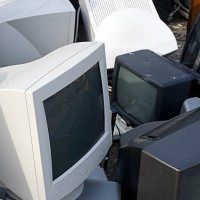

A move to improve household appliances is gathering momentum as the EU and a number of US states consider introducing legislation to implement design requirements for those appliances that allow users to repair them or replace parts instead of buying a new appliance once it breaks.
The European Commission consulted the public in early 2018 on the proposal to revise the layout and information provided on the energy label that comes with all appliances bought within the EU, which includes data on repairability, durability and resource efficiency.
This idea came amid a growing backlash against products which cannot be fixed because they are glued together or the manufacturer does not supply spare parts or repair instructions once the product's warranty ran out, forcing customers to discard the old appliance and buy a new one. The proposals would primarily apply to lighting, televisions and large household appliances, but some are arguing that smartphones, computers and printers should also be included.
However, some argue that repairing an old appliance with a low energy rating can be worse in terms of lifetime CO2 emissions than buying a new model rated A or AA. The experts say that, in most cases, repairing an old(ish) device produces fewer CO2 emissions than buying a new one.
There are also fears that some customers would try to repair appliance themselves, ultimately damaging the machines and potentially rendering them dangerous. As industry group Digital Europe says: "We understand the political ambition to integrate strict energy and resource efficiency aspects in Ecodesign, but we are concerned that some requirements are either unrealistic or provide no added value."
According to the BBC News website, these policies have been driven by some arresting statistics, where: